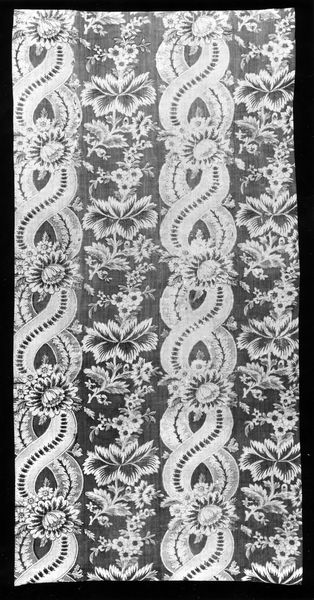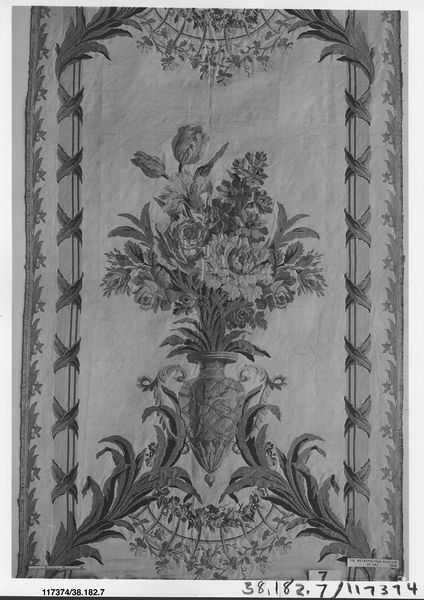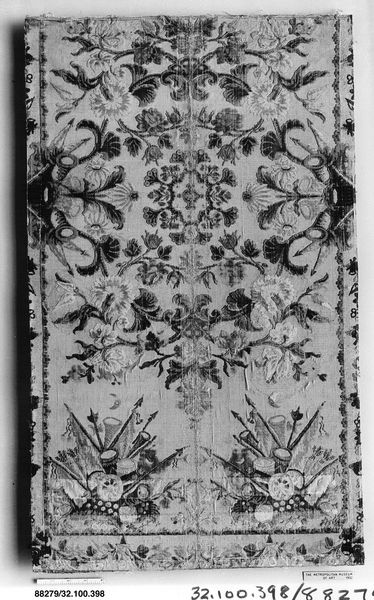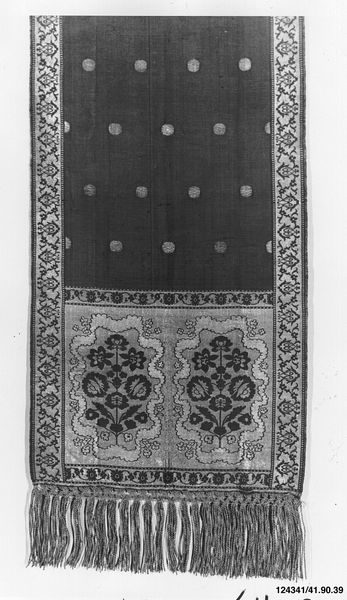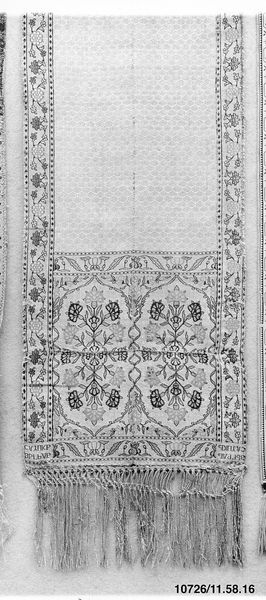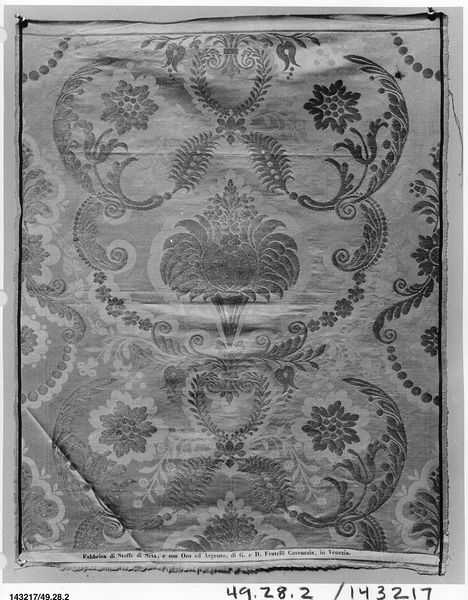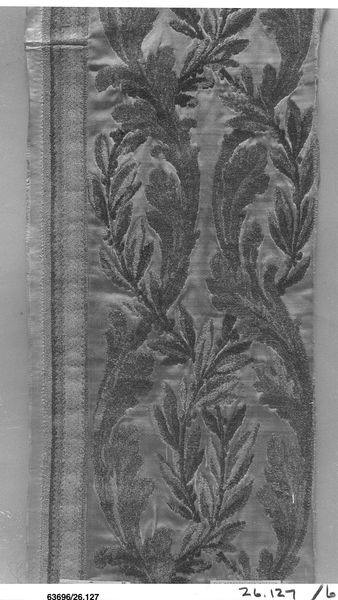
Dimensions: L. 126 x W. 16 1/2 inches (320 x 41.9 cm)
Copyright: Public Domain
Editor: We are looking at “Border of woven silk,” created between 1770 and 1780, from the Metropolitan Museum of Art and attributed to Philippe de Lasalle. It’s predominantly shades of gray. The design feels balanced, almost symmetrical, but there's also this dynamic swirling ribbon that disrupts the composition in a delightful way. How would you interpret the artist's intentions through the design elements? Curator: The dynamism is achieved through a masterful manipulation of form and line. Note the serpentine path of the ribbon, how it intersects with and is also grounded by the botanical arrangements. It establishes an upward thrust that is countered by the weight of the floral clusters. The formal repetition of floral clusters creates unity. What do you think of the use of negative space? Editor: Now that you mention the negative space, it feels intentional in giving each design element room to breathe. Is there any significance in the juxtaposition of natural elements and the manufactured ribbon, speaking from a purely formal perspective? Curator: The interplay introduces an essential tension. Consider the inherent qualities: The silk's woven texture interacts with the depicted flora. It's a dance between what is naturally occurring and what is constructed. Do you agree that the texture and line quality gives an impression of depth? Editor: Definitely. The fineness of the weave gives this illusion, yes! Looking at the flowers and ribbons closely I think of 18th century Romanticism - or maybe that’s projection. The detail almost obscures the weave itself... Curator: Your read is plausible because it underscores Romanticism. Let us also remember this is decorative art. The work succeeds precisely because it is designed to be looked at in sections – repeated visual cues giving unity when viewed as one. Editor: I see what you mean. Each element does invite closer inspection while fitting a coherent aesthetic when looked at as a whole. Thanks! Curator: Indeed, by appreciating the weave’s components and their relationship to each other, we discern more clearly the hand of the artist.
Comments
No comments
Be the first to comment and join the conversation on the ultimate creative platform.
